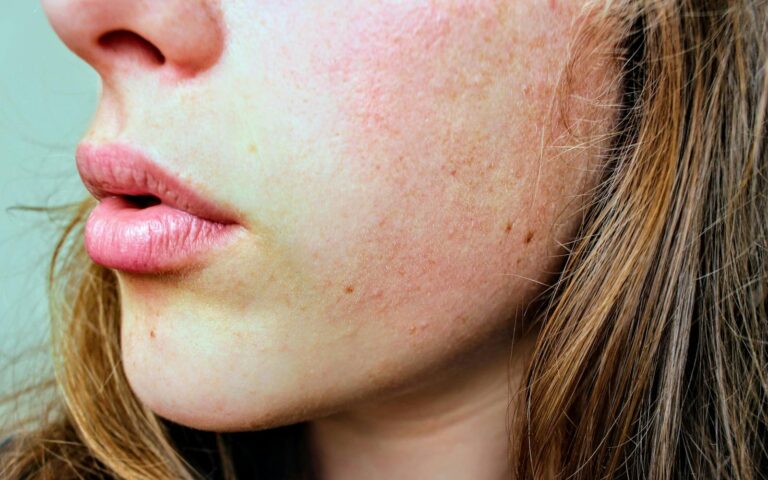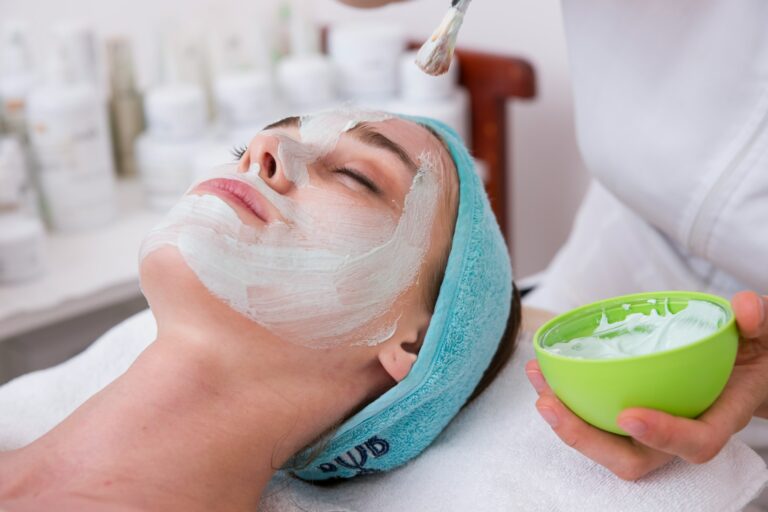Most people with redness and sensitive skin struggle to find effective products that won’t irritate their complexion. Understanding what causes your skin to react is important, as it can lead you to make more informed choices about your skincare routine. You should prioritize gentle, soothing ingredients that help calm inflammation and support your skin’s barrier. In this guide, we’ll explore tailored techniques and product recommendations to help you achieve a balanced, healthier complexion while minimizing irritation and redness.
The Root Causes of Redness and Sensitivity
Understanding the root causes of redness and sensitivity in your skin is imperative for developing an effective skincare routine. Your skin may react to various stimuli, both from the external environment and internal physiological changes. Identifying specific triggers is the first step towards soothing irritation and achieving a balanced complexion.
Environmental Triggers: Pollution and Weather
Environmental factors can significantly influence skin redness and sensitivity. Pollution, dust, and particulate matter can lead to inflammation and exacerbate underlying conditions like rosacea or eczema. When these particles penetrate the skin’s barrier, they trigger a response that can leave your skin feeling irritated and red. Additionally, drastic changes in weather—such as transitioning from cold, dry air to hot, humid conditions—can lead to heightened sensitivity and an increased likelihood of flare-ups.
Exposure to direct sunlight can also be a major player in your skin’s reaction. UV rays can lead to redness, and over time, they may contribute to chronic conditions. You may want to consider protecting your skin by wearing sunscreen daily, regardless of the weather, to help prevent these reactions. Assume that you can improve your skin’s responses and overall health by being mindful of environmental factors.
Internal Factors: Hormones and Diet
Your hormones play a critical role in the health of your skin and can contribute to temporary flare-ups. For instance, fluctuations during your menstrual cycle or hormonal changes associated with menopause can lead to increased oil production, which may aggravate existing irritation. Diet also significantly affects your skin; certain foods, especially processed and high-sugar items, can trigger inflammatory responses in some people. You might find that adjusting your dietary habits can lead to noticeable improvements in skin tone and texture.
Specific nutrients can help soothe the skin and reduce inflammation. Including foods rich in omega-3 fatty acids, such as salmon and walnuts, and antioxidants like berries and leafy greens may reduce the occurrence of redness. Assume that making dietary adjustments to include skin-friendly foods can positively influence your skin’s health and reduce sensitivity over time.
- Hormonal fluctuations can lead to increased oil production
- A poor diet can trigger inflammatory responses
- Foods high in omega-3s may help soothe skin irritation
- Antioxidant-rich foods can combat inflammation
Essential Ingredients for Soothing Solutions
Calming Agents: The Power of Aloe and Chamomile
Aloe vera stands out as a natural wonder for sensitive skin types, known for its anti-inflammatory properties. When applied, it provides a cooling sensation that can ease irritation and redness, while also promoting healing. Studies have shown that the gel-like substance from the aloe plant contains active compounds like polysaccharides, which not only hydrate but also assist in cell regeneration. Incorporating products with high concentrations of aloe vera or using pure aloe gel directly from the leaf can transform your skincare routine, giving your skin the relief it desperately seeks.
Chamomile, with its gentle yet effective therapeutic qualities, complements aloe in addressing redness. This ingredient is rich in antioxidants and contains bisabolol, which has been shown to reduce inflammation and soothe itchy skin. Originating from the daisy-like flowers, chamomile extract can enhance product efficacy by calming down flare-ups and providing a barrier of protection against further irritation. Look for skincare products that feature chamomile as a key ingredient, particularly in formulations designed specifically for sensitive skin.
Barriers to Irritation: Role of Ceramides and Fatty Acids
Ceramides play a vital role in maintaining your skin’s natural barrier. These lipids, which constitute about 50% of the skin barrier, lock in moisture and prevent environmental stressors from wreaking havoc on your skin. Insufficient levels of ceramides can lead to increased sensitivity and can make your skin more susceptible to dryness and irritation. By utilizing moisturizers enriched with ceramides, you help to reinforce your skin’s defense mechanisms, allowing it to retain moisture and repel harmful pollutants effectively.
Fatty acids, especially omega-3 and omega-6, further contribute to skin health, offering nourishment that helps to mend the barrier. These fatty acids are instrumental in forming a protective layer, reducing water loss, and maintaining overall skin integrity. Your skin becomes less prone to becoming red or reactive when its barrier is strong and well-hydrated. Incorporating oils or creams rich in fatty acids aids in creating a well-rounded defense against potential irritants, ensuring you maintain calm and resilient skin.
In the quest for comfort and balance, consider products that combine ceramides and fatty acids. Together, they foster an environment where your skin can thrive without the nagging concerns of redness and sensitivity, allowing you to enjoy your daily skincare rituals without fear of irritation. Taking care of your skin becomes a soothing experience rather than a potential trigger for distress.
Practical Steps for Choosing the Right Products
Label Literacy: How to Identify Suitable Formulations
Understanding product labels can dramatically enhance your skincare choices, especially if you have sensitive skin prone to redness. Look for ingredients that prioritize healing and comfort, such as aloe vera, chamomile, and niacinamide. These components not only soothe irritation but also help reinforce the skin’s barrier. Avoid products with fragrances, alcohol, and important oils, as these can exacerbate sensitivity and lead to flare-ups. Reading the ingredient list in detail will help you make more informed decisions that cater to your skin’s specific needs.
It’s also wise to pay attention to the product’s pH level, ideally seeking formulations that are pH balanced, typically between 4.5 and 5.5. This range helps maintain the skin’s natural acidity, which can be disrupted by harsh ingredients. Additionally, look for terms like “hypoallergenic” or “non-comedogenic,” which indicate that these products are less likely to cause irritation or breakouts.
Patch Testing: Avoiding the Risk of a Reaction
Before fully integrating a new product into your skincare routine, conduct a patch test to safeguard against unexpected reactions. Apply a small amount of the product to a discreet patch of skin, like behind your ear or on your inner forearm, and observe for any signs of irritation or redness over 24 to 48 hours. If you notice any discomfort, discontinuing use before it affects larger areas of your skin is best.
Patch testing also allows you to gauge how your sensitive skin responds to new formulations without risking extensive irritation. Even when you choose products touted as suitable for sensitive skin, individual reactions can still vary. Consider how your skin reacts not just immediately, but over several days, as delayed reactions can also occur. This practice not only builds your confidence in new products but establishes a more reliable routine tailored just for you.
Daily Routines: Tailoring Your Skincare Protocol
Gentle Cleansing Techniques: Avoiding Stripping the Skin
Incorporating gentle cleansing techniques into your daily routine is vital, especially when managing redness and sensitive skin. Opt for a sulfate-free cleanser that features soothing ingredients like chamomile or aloe vera. These components work to calm the skin while effectively removing dirt and impurities without causing irritation. Using lukewarm water instead of hot can also prevent unnecessary dryness and help maintain your skin’s natural barrier. The goal is to cleanse your skin without disrupting the delicate balance it needs to stay healthy and comfortable.
Another beneficial practice involves minimizing the number of times you wash your face each day. Washing twice—once in the morning and once in the evening—can be sufficient for most individuals. Additionally, consider using your fingertips rather than a washcloth or sponge, as these can be too abrasive. This slight adjustment in your cleansing technique may significantly reduce the likelihood of triggering a redness flare-up.
Moisturizing and Protection: Building a Defense Against Redness
Moisturizing plays a vital role in protecting your skin’s barrier and preventing further irritation. Select a rich, fragrance-free moisturizer that contains allantoin, glycerin, or shea butter. These ingredients not only provide hydration but also encourage skin repair, specifically targeting dryness and sensitivity. Using your moisturizer while your skin is still slightly damp can enhance absorption, leading to an added layer of protection. Without proper moisturizing, skin can easily become dry, leading to increased redness and discomfort.
To enhance your defense against redness, layer on a mineral-based sunscreen during the day. Zinc oxide or titanium dioxide formulations are not only gentle but also provide physical barriers against UV rays, which are notorious triggers for sensitive skin. Moreover, these types of sunscreens often possess anti-inflammatory properties, further contributing to your skin’s protection. Consistent application, especially if you’re exposed to harsh environments or engaging in outdoor activities, is of utmost importance in maintaining your skin’s health.
Adapting your skincare routine to incorporate a balanced approach to moisturizing and sun protection can make a significant impact in reducing the frequency and severity of redness. Regular application of a nourishing moisturizer, combined with protective measures like sunscreen, fortifies your skin’s barrier and enhances its resilience against environmental aggressors. Over time, as you pay attention to how your skin responds, you can tailor your approach to find the perfect strategy that keeps redness at bay while promoting overall skin health.
Lifestyle Adjustments That Make a Difference
Stress Management: Its Impact on Skin Sensitivity
Stress can be a significant contributor to skin sensitivity and redness. When you’re under stress, your body produces higher levels of the hormone cortisol, which can lead to increased oil production, inflammation, and flare-ups. Incorporating stress management techniques into your daily routine can, therefore, play a pivotal role in improving your skin’s condition. Practices like mindfulness meditation, yoga, and even regular exercise can help you shift your focus and reduce anxiety, enabling your skin to calm down. Studies have shown that participants who engage in stress-reduction programs can see a notable decrease in skin reactivity and irritation.
In addition to traditional methods of relaxation, consider engaging in hobbies or activities that bring you joy and fulfillment. Whether it’s painting, hiking, or simply taking a leisurely stroll in nature, finding your unique way to unwind can create a positive ripple effect on your skin health. By fostering a calm mental state, you give your skin the opportunity to recover and thrive without the added burden of stress-induced inflammation.
Dietary Changes: Foods That Can Help or Hurt
Your diet plays a crucial role in how your skin reacts to the environment around you. Certain foods can exacerbate inflammation and thus worsen redness in sensitive skin, while others can give your skin the nutrients it needs to heal. Foods high in processed sugars and unhealthy fats—think sugary snacks, fried foods, and refined carbs—can increase inflammation and trigger flare-ups, making them less than ideal for those grappling with skin sensitivity. In contrast, a diet rich in antioxidants, omega-3 fatty acids, and anti-inflammatory foods can foster healthier skin. For instance, incorporating fatty fish, leafy greens, nuts, and berries into your meals can work wonders to soothe and calm your skin from within.
For optimal skin health, focus on hydration as well. Drinking plenty of water can help maintain your skin’s moisture levels, preventing dryness that often leads to irritation. Furthermore, consider reducing dairy and gluten intake if you observe that these foods seem to irritate your skin. Conducting a food diary could provide insights into what works for you, allowing your diet to be a complementary approach to your skincare regimen.
Final Words
The journey to managing redness and sensitive skin can be complex, but with the right approach, you can help soothe and protect your skin effectively. Choosing products formulated specifically for sensitive skin, focusing on gentle ingredients like aloe vera and chamomile, and establishing a consistent skincare routine are key steps in reducing irritation and enhancing your skin’s resilience. It’s also beneficial to minimize exposure to known irritants and to incorporate calming practices into your daily life, such as stress management and proper hydration.
Your skin is unique, and as you navigate through various products and techniques, it’s imperative to listen to its needs. Regularly assessing your skincare routine and making adjustments based on your skin’s reactions will empower you to find what works best for your individual concerns. By prioritizing gentle, nourishing, and hydrating options, you can achieve a balanced complexion that reflects your well-being and confidence.







